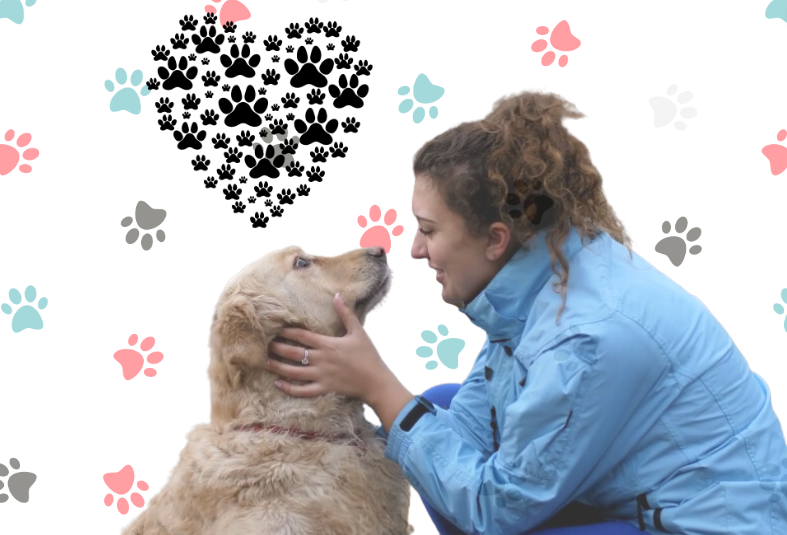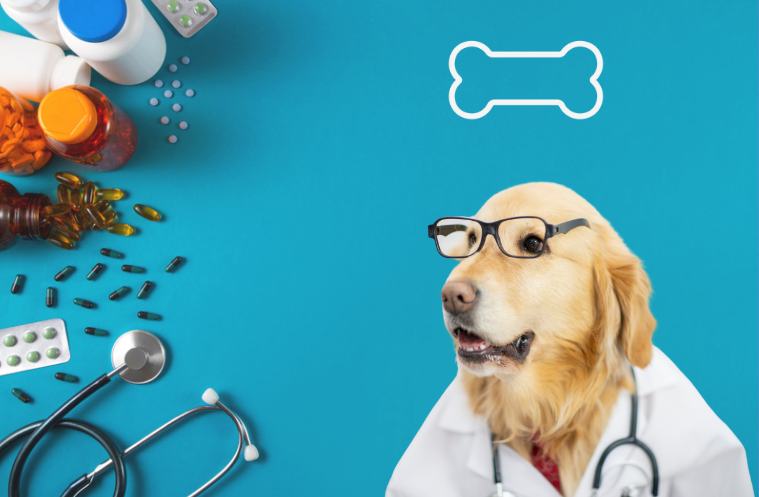Ever noticed your female dog leaking clear, odorless fluid and wondered what it was? You’re not alone. When I saw it, it seemed unusual, but it turns out it is a common concern among many pet owners.
It’s important to understand that this discharge could potentially signal several underlying conditions, ranging from normal physiological processes to health issues requiring immediate veterinary intervention. Today we’ll try to help you understand whether it’s a cause for concern or merely a natural occurrence.
Keep in mind that while this post will provide valuable insights, it does not replace professional veterinary advice. Always consult a vet for accurate diagnosis and treatment if you notice unusual signs in your pet.
Normal Vaginal Discharge

Every pet owner must understand the concept of normal vaginal discharge in female dogs. Just like in humans, a certain amount of vaginal discharge is a part of a dog’s regular physiological processes. It can be clear or slightly cloudy, and typically doesn’t have a strong odor.
The consistency and color of normal discharge can vary depending on the stage of the dog’s estrus (heat) cycle. For instance, during the proestrus stage, the discharge may appear bloody, but as the cycle progresses, it can turn clear and watery. This change is completely normal and not a cause for alarm.
However, a marked increase in the volume of the discharge, a change in its consistency, or a strong odor could potentially indicate an underlying issue. In such cases, it’s crucial to consult your vet promptly.
Detecting Abnormal Discharge

Detecting abnormal discharge in your female dog involves observing changes in quantity, color, and smell. While some discharge is normal, especially during the dog’s heat cycle, an increase in volume, a change in color (such as yellow or green discharge), or a foul odor can indicate a health concern.
Frequent licking of the area, visible discomfort, or changes in behavior can also signal a potential issue. For instance, if your dog appears more lethargic, shows a loss of appetite, or experiences a change in urination patterns, these could be signs of an infection or other medical condition.
Being aware of these signs and symptoms is essential to ensure the wellbeing of your pet. Immediate veterinary consultation is recommended if any such abnormalities are detected.
Possible Causes

Hormonal Changes
Hormonal changes in female dogs can lead to clear, odorless fluid discharge. During the heat cycle, the levels of certain hormones, like estrogen and progesterone, fluctuate significantly, which can lead to changes in the volume and consistency of the discharge.
In the early stages of the heat cycle, the discharge can be clear and watery, and this is considered normal. But if this continues past the heat cycle or if the dog shows signs of discomfort, it may indicate an underlying issue and should be evaluated by a vet.
False Pregnancy
Pseudopregnancy, or false pregnancy, typically occurs a few weeks after the dog’s heat cycle and is characterized by behaviors like nesting, mothering inanimate objects, and even milk production. False pregnancy can also cause the dog’s body to mimic pregnancy symptoms, including the production of clear discharge.
Though this condition usually resolves on its own, in some cases, it may need veterinary attention, especially if the dog shows signs of distress.
Urinary Incontinence
Urinary incontinence is a common issue in female dogs, particularly in older pets or those that have been spayed. It can result in the leakage of clear, odorless fluid, often mistaken for vaginal discharge.
This condition occurs when a dog is unable to hold urine in the bladder due to a weak urinary sphincter or other underlying medical conditions. Urinary incontinence can lead to the dog urinating in small amounts involuntarily, particularly when they are relaxed or asleep.
If you notice frequent wet spots where your dog sleeps or a dampness around her rear end, it might be a sign of urinary incontinence. Consult your vet promptly, as incontinence could lead to skin infections or other health issues if left untreated.
Bacterial Vaginosis
Bacterial vaginosis is a condition that can affect female dogs, leading to an overgrowth of harmful bacteria in the vagina. While this condition often presents with cloudy or colored discharge and a foul odor, in some cases, it might result in the release of clear, odorless fluid.
Bacterial vaginosis can cause discomfort and irritation in dogs, often leading to frequent licking of the area. Left untreated, it can result in more serious reproductive issues, so if you notice any signs of this condition, it’s crucial to seek veterinary care promptly.
Urinary Tract Infections (UTIs)

Urinary Tract Infections (UTIs) can also lead to clear, odorless fluid discharge in female dogs. These infections are often caused by bacteria entering the urinary tract, leading to inflammation and discomfort.
While UTIs often cause symptoms like frequent urination, discomfort during urination, or cloudy or strong-smelling urine, in some cases, they may only present as clear, odorless leakage. If a UTI is suspected, it’s essential to seek veterinary care, as untreated UTIs can lead to kidney damage.
Vaginal Infections
Vaginal infections, different from bacterial vaginosis could be caused by a variety of organisms, including bacteria, yeast, or even parasites. The nature of the discharge can vary depending on the cause of the infection.
While some infections may cause colored or smelly discharge, others may result in the release of clear, odorless fluid. If you suspect your pet has a vaginal infection, it’s crucial to consult a vet promptly to prevent further complications.
Foreign Bodies or Trauma
Foreign bodies, like grass seeds or small toys, can sometimes find their way into a dog’s vagina, causing irritation, inflammation, and discharge. Similarly, any trauma to the area, like a scratch or a wound, can also result in fluid leakage.
In these cases, a thorough physical examination by a veterinarian is crucial to identify and remove the foreign object or to treat the wound. If left untreated, these conditions can lead to serious infections.
Allergic Reactions
Just like people, dogs can also have allergic reactions. Certain substances, like specific fabrics, cleaning products, or even certain types of foods, can cause allergic reactions leading to irritation and discharge. This irritation can manifest as clear, odorless fluid leakage from your dog’s vagina.
If you suspect an allergic reaction, it’s important to identify the allergen and remove it from the dog’s environment. In some cases, medication may also be needed to treat the symptoms.
Tumors or Growths
Though rare, tumors or growths in the vagina or reproductive tract can also cause clear, odorless discharge in female dogs. These tumors can be benign or malignant and can cause various symptoms, including discharge, discomfort, and changes in urination or defecation.
If you notice any unusual lumps or bumps on your dog, it’s essential to consult a vet immediately. Early detection can be crucial in successfully treating such conditions.
Diagnostic Procedures

If your dog is leaking clear, odorless fluid, your vet will likely use a variety of diagnostic procedures to determine the cause. These tests may include a physical examination, urine tests, blood tests, and in some cases, imaging studies like x-rays or ultrasound.
For vaginal discharge, a swab of the fluid may be taken for further analysis. This can help identify any bacteria, yeast, or other organisms that may be causing an infection. Remember, proper diagnosis is key to determining the underlying cause of the fluid leakage and prescribing the correct treatment.
Never attempt to diagnose or treat your pet at home without the guidance of a veterinary professional.
Treatment Options

The treatment for your dog’s fluid leakage will depend on the underlying cause. For instance, hormonal changes and false pregnancies often do not require treatment, unless the dog shows signs of distress. Urinary incontinence might be managed with medications, a change in diet, or in some cases, surgery.
Infections, whether in the urinary tract or the vagina, are typically treated with antibiotics or antifungal medications. Foreign bodies or injuries may require surgical intervention, while allergic reactions can be managed by removing the allergen and prescribing antihistamines or steroids.
Tumors or growths might require surgery, chemotherapy, or radiation therapy, depending on their nature and location. Each dog is unique, and what works for one might not work for another. Always follow your vet’s instructions when it comes to treating your pet.
FAQs:
What if the fluid is jelly-like?
A jelly-like discharge could indicate a serious condition like pyometra or a pregnancy. Consult a vet immediately.
What if my male dog is leaking clear fluid?
Male dogs can also leak fluid due to urinary tract infections, urinary incontinence, or prostate issues. Seek professional help if you notice this.
What if the discharge has a fishy odor?
A fishy odor usually indicates an anal gland issue. If your dog is scooting or licking the anal area excessively, consult a vet.
What is pyometra and could it cause this problem?
Pyometra is a serious infection of the uterus that can cause a dog to leak pus-filled discharge. This is a medical emergency and requires immediate veterinary attention.
What are the symptoms of pyometra?
Symptoms of pyometra include excessive thirst, frequent urination, lethargy, loss of appetite, and a pus-filled discharge from the vagina.
Conclusion
To sum up, clear, odorless fluid leakage in female dogs can have a multitude of causes, from normal physiological processes to serious medical conditions. Being aware of these potential causes and knowing the signs to watch for can help ensure the health and wellbeing of your pet.
If your pet is experiencing this issue, it’s important to consult a vet promptly for an accurate diagnosis and appropriate treatment. Early detection and intervention are key in managing most health issues in pets. So, don’t delay – if you’re concerned about your pet, reach out to a vet today.

